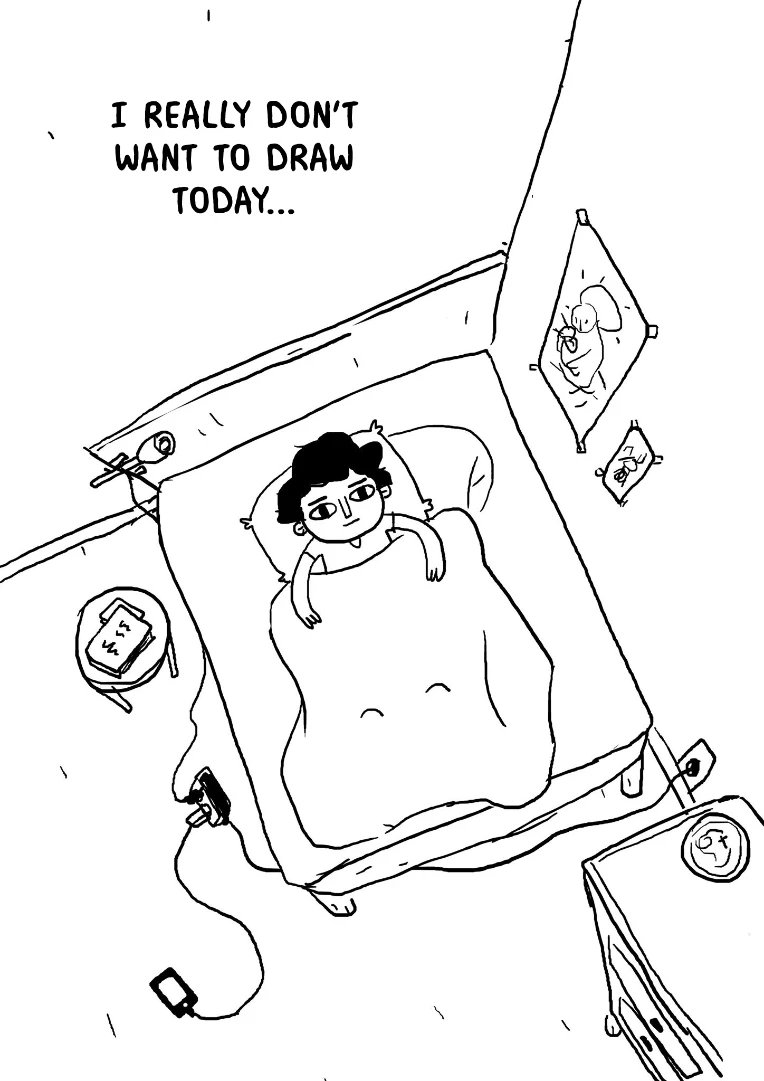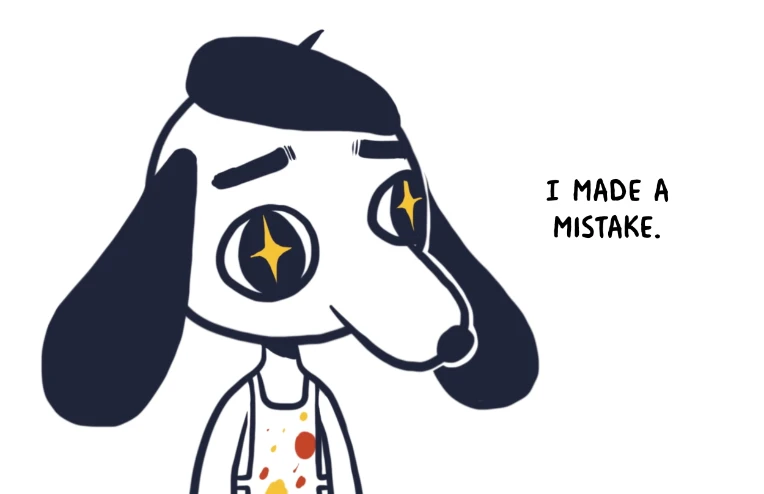Why a Buffer?
A buffer is a collection of pre-made pages that act as a backlog, allowing you to post updates even if you couldn’t finish a new one on time. Without a buffer, you might find yourself rushing to finish updates just before the deadline.
When publishing a long format webcomic, it’s crucial to consistently upload episodes according to a schedule. This can be challenging, especially if you create comics in your free time alongside a full-time job or studies.
Sometimes life gets in the way: sickness, unexpected work demands, or broken drawing equipment. A buffer helps you manage these interruptions. Ideally, you should work up a backlog before you start uploading, but you can also build it as you go. Aim to keep drawing even after you’ve established a decent buffer.
Consider Your Pace
How large should your buffer be? Before launching your webcomic, carefully consider your uploading schedule. Can you produce one page per day, week, or month? Your production rate will determine the size of the buffer you need.

Good thing I have a buffer!
When You Need a Break
If your buffer runs out and you need a break, it’s not the end of the world. Just be open with your readers about the situation and let them know when you plan to resume updates.
Take, for example, Evan Dahm, the creator of incredibly long webcomics like Vattu and 3rd Voice. He occasionally posts what he calls an "interlude", along with a message such as: "3rd Voice is back next week! Some labor-intensive drawing in the next one! Thank you for reading!". In these updates he also shares behind-the-scenes sketches to keep readers engaged.
As long as you communicate, your readers will understand. What they may not forgive is disappearing without any explanation. Prolonged hiatuses can lead to losing your audience altogether.
Respect Your Readers
You might object: "Why can’t I just upload sporadically, whenever I finish a page? After all, I’m doing all this work for free!". Of course you can. It’s your webcomic. But don’t expect to build a loyal audience that way.
Think about it from your readers’ perspective: they follow your story, get invested in it, comment, and share your work. If updates are sporadic, it can be challenging for them to keep track. They might forget details like, "Who was this character again?" or "What were they doing?". Regular updates help maintain their engagement and understanding of the story.
Getting attention for your project is challenging with so much free entertainment online. Don’t squander your readership by leaving them hanging in the middle of a gripping story!
What Happened to Me
As a student, I published my webcomic The One That Got Away on the platforms Webtoon and Tapas. I had a buffer of a few pages and regularly uploaded according to schedule. All was going well until I moved abroad for an internship and had less time for art, resulting in a six-month hiatus. My mistake was not explaining this to my readers—I just stopped updating.
When I resumed uploading, I simply announced, "The One is back!". The result: Fewer comments and views, although some die-hard fans did return. Later, when I started a full-time job and had even less time for art, I uploaded pages irregularly as I finished them. Without a stable schedule, the momentum was lost, and interest dwindled.

Lesson learned!
The Ultimate Buffer?
Seeing comments like "What happened to the author?" and "Is this webcomic dead?" made me feel quite guilty. The above experience with The One That Got Away led me to adopt a new approach.
Nowadays, I create the ultimate buffer: I have my entire webcomic more or less finished in advance before launching. This might seem like overkill. My current project, Forest Story, already has 34 completed pages, providing a buffer of almost nine months if I started uploading weekly. But for me it was a valuable lesson learned, and an approach you also can consider.
So take it from me: prepare a buffer—or suffer the consequences!
Luis
Never hearded of the buffer concept. I guess this could apply to animations also now that I think about it. I’m a bit buffer less and so busy with work. It’s a dry summer ?
HolyKonni
It could definitely apply to animation, especially if you're working on some sort of episodic show or cartoon.